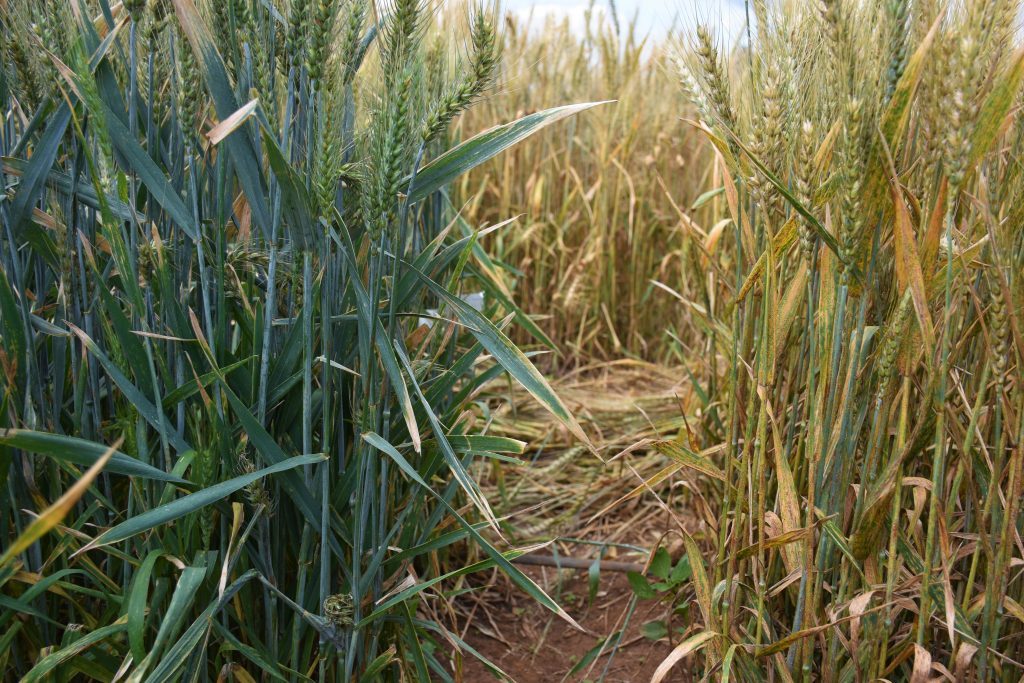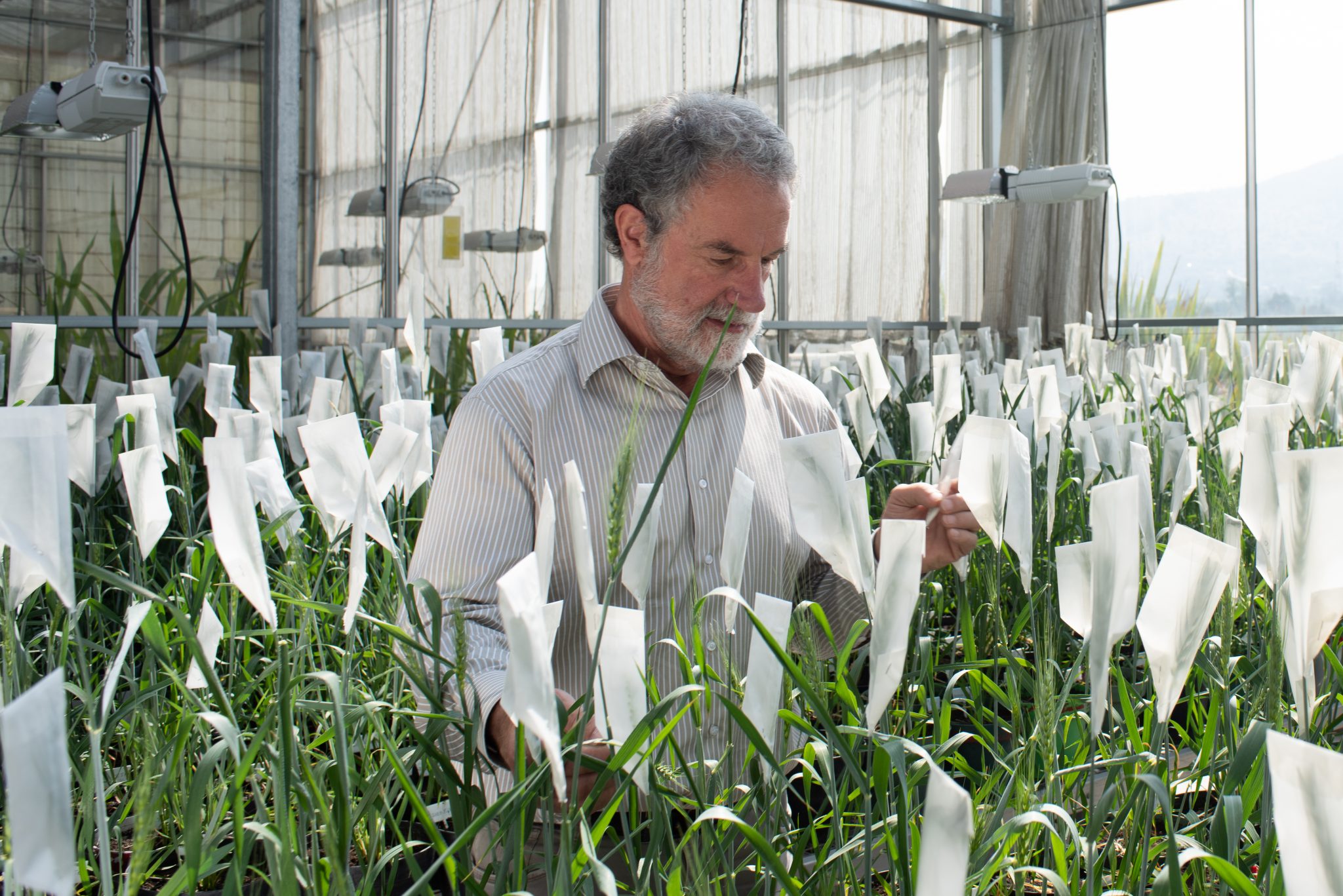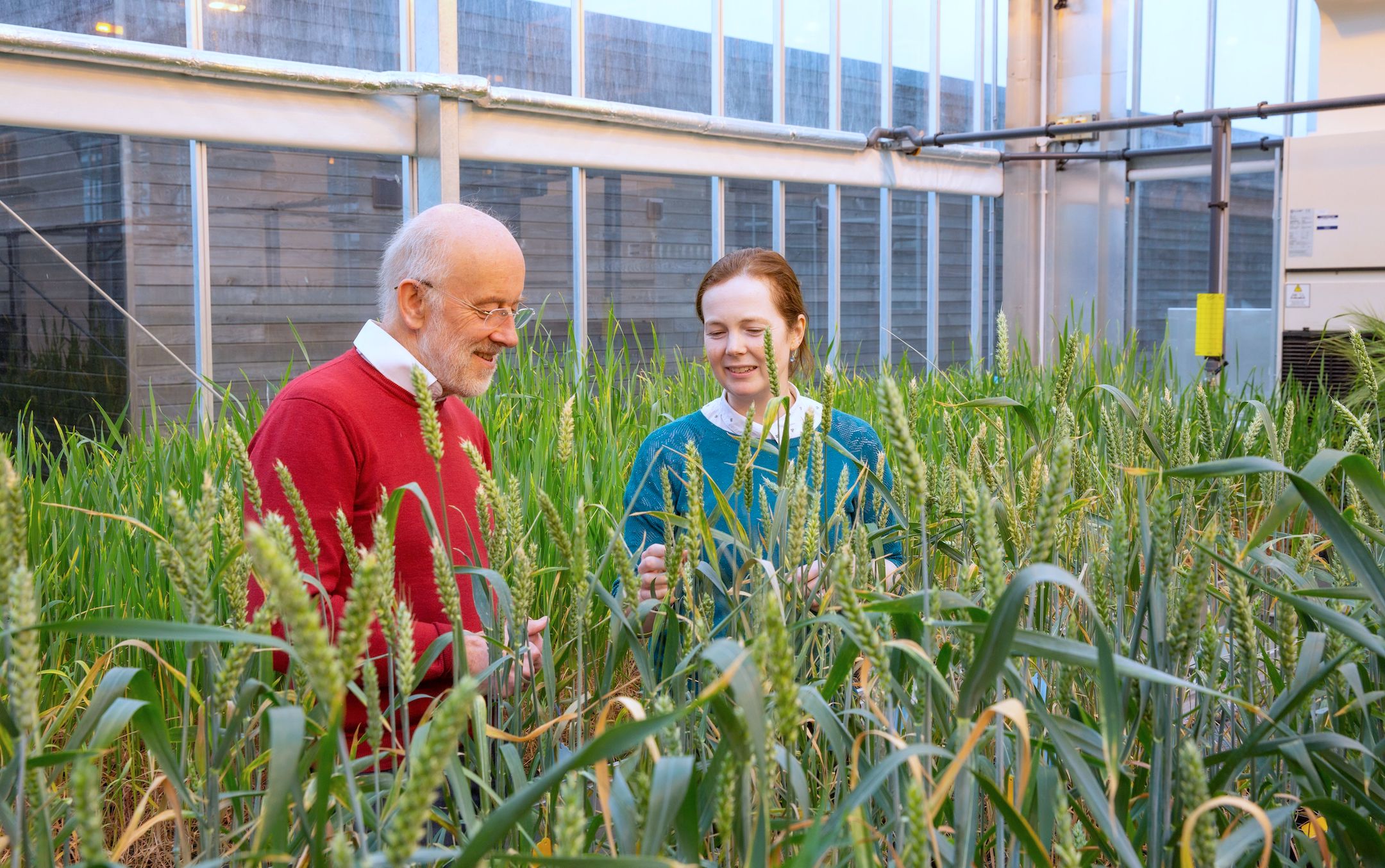Disclaimer: The views and opinions expressed in this article are those of the authors and do not necessarily reflect the official views or position of the International Maize and Wheat Improvement Center (CIMMYT).
Daily life as we know it has grinded to a halt and crop scientists are pondering next steps in face of the global COVID-19 crisis. Hans Braun, Director of the Global Wheat Program at the International Maize and Wheat Improvement Center (CIMMYT) and the CGIAR Research Program on Wheat, joins us for a virtual chat to discuss the need for increased investment in crop disease research as the world risks a food security crisis.
What have you learned from your work on contagious wheat diseases that we can take away during this time?
Wheat epidemics go back to biblical times. Wheat scientists now believe Egypt’s “seven bad years” of harvest referenced in the Bible were due to a stem rust outbreak.
So, we know what happens when we have a crop epidemic: diseases can completely wipe out a harvest. I have seen subsistence farmers stand in front of their swaying, golden wheat fields, but there is not a single grain inside the spikes. All because of wheat blast.
There are a lot of parallel issues that I see with COVID-19.
The epidemiology models for humans which we see now have a lot in common with plant epidemiology. For example, if you take a wheat field sown with a variety which is rust-resistant and then you get a spore which mutates and overcomes the resistance — like COVID-19 overcomes the human immune system — it then takes about two weeks for it to sporulate again and produce millions of these mutated spores. They sporulate once more and then you have billions and trillions of spores — then the wheat fields at the local, national and, in the worst case, regional level are severely damaged and in worst case are going to die.
The problem is that since we cannot quarantine wheat, if the weather is favorable these spores will fly everywhere and — just like with COVID-19 — they don’t need a passport to travel.
Could you elaborate on that? How can wheat diseases go global?
Usually it takes around 5 years, sometimes less, until a mutation in a rust spore can overcome the resistance of a wheat variety. Every so often, we see rust epidemics which cover an entire region. To monitor this movement, the Borlaug Global Rust Initiative of Cornell University and CIMMYT, funded by the Bill & Melinda Gates Foundation and DFID, established a global rust monitoring system that provides live data on spore movements.
For example, if you have a new race of stem rust in Yemen — and in Yemen wheat matures early — and then farmers burn the straw, their action “pushes” the spores up into the air, thus allowing them to enter the jet stream and cover 2,000 to 5,000 kilometers in a short period of time. Spores can also be carried on clothes or shoes by people who walked into an infected wheat field. Take Australia, for example, which has very strict quarantine laws. It is surrounded by sea and still eventually they get the new rust races which fly around or come with travelers. One just cannot prevent it.

Could climate change exacerbate the spreading of crop diseases?
Yes, the climate and its variability have a lot to do with it. For example, in the case of yellow rust, what’s extremely important is the time it takes from sporulation to sporulation. Take a rust spore. It germinates, then it grows, it multiplies and then once it is ready it will disperse and infect wheat plants. From one dispersal to the next it takes about two weeks.
In the last decades, in particular for yellow rust, new races are better adapted to high temperature and are multiplying faster. In a Nature paper, we showed that 30 years ago yellow rust was not present in the Great Plains in the US. Today, it is the most important wheat disease there. So there really is something going on and changing and that’s why we are so concerned about new wheat disease races when they come up.
What could an epidemiologist specialized in human viruses take from this?
Well, I think human epidemiologists know very well what happens in a case like COVID-19. Ordinary citizens now also start to understand what a pandemic is and what its related exponential growth means.
Maybe you should ask what policymakers can learn from COVID-19 in order to prevent plant epidemics. When it comes to epidemics, what applies to humans applies to plants. If there is a new race of a given crop disease, in that moment, the plant does not have a defense mechanism, like humans in the case of COVID-19, because we haven’t developed any immunity. While in developed countries farmers can use chemicals to control plant diseases, resource-poor farmers do not have this option, due to lack to access or if the plant protective has not been registered in their country.
In addition to this, our lines of work share a sense of urgency. If “doomsday” happens, it will be too late to react. At present, with a human pandemic, people are worried about the supply chain from food processing to the supermarket. But if we have an epidemic in plants, then we do not have the supply chain from the field to the food processing industry. And if people have nothing to eat, they will go to the streets and we will see violence. We simply cannot put this aside.
What other lessons can policymakers and other stakeholders take away from the current crisis?
The world needs to learn that we cannot use economics as the basis for disease research. We need to better foresee what could happen.
Let’s take the example of wheat blast, a devastating disease that can destroy the wheat spike and was initially confined to South America. The disease arrived in Bangladesh in 2016 and caused small economic damage, maybe 30,000 tons loss in a small geographic area — a small fraction of the national production but a disaster for the smallholder farmer, who thus would have lost her entire wheat harvest. The disease is now controlled with chemicals. But what if chemical resistance is developed and the disease spreads to the 10 million hectares in the Indo-Gangetic Plains of India and the south of Pakistan. Unlikely? But what if it happens?
Agriculture accounts for 30% of the global GDP and the research money [going to agriculture] in comparison to other areas is small. Globally only 5% of R&D is invested in research for development related to agriculture. Such a discrepancy! A million U.S. dollars invested in wheat blast research goes a long way and if you don’t do it, you risk a disaster.
If there is any flip side to the COVID-19 disaster, it is that hopefully our governments realize that they have to play a much more serious role in many areas, in particular public health and disease control in humans but also in plants.
A Lloyd’s report concluded that a global food crisis could be caused by governments taking isolating actions to protect their own countries in response to a breadbasket failure elsewhere. I’m concerned that as the COVID-19 crisis continues, governments will stop exports as some did during the 2008 food price crisis, and then, even if there is enough food around, the 2008 scenario might happen again and food prices will go through the roof, with disastrous impact on the lives of the poorest.
This article was originally published by the CGIAR Research Program on Wheat (WHEAT):
Crossing boundaries: looking at wheat diseases in times of the COVID-19 crisis.
Cover photo: Hans Braun, Director of the Global Wheat Program at the International Maize and Wheat Improvement Center (CIMMYT), inspects wheat plants in the greenhouses. (Photo: Alfonso Cortés/CIMMYT)


 Nutrition, health and food security
Nutrition, health and food security 
